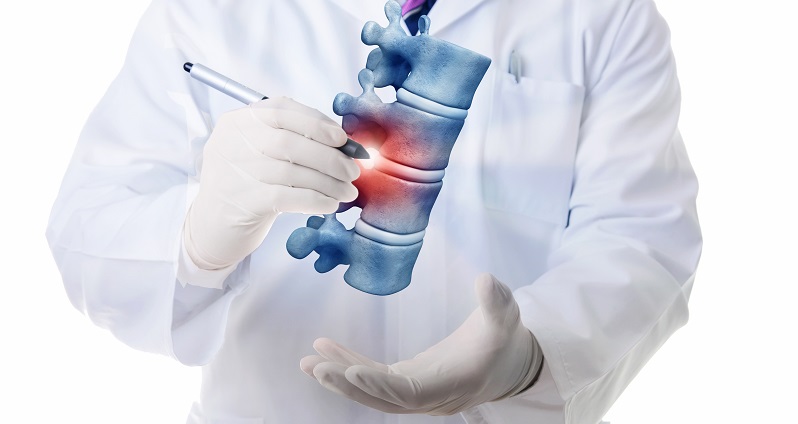How To Treat Thoracic Disc Herniations
Category: Spine | Author: Stefano Sinicropi

Your thoracic spine is located in the middle of your back, comprised of 12 vertebrae that extend from the base of your neck to the top of your lumbar spine. This area of your spine is known for its stability, so while the cervical and lumbar portions are more common sites for disc herniations, it’s not unheard of to have a slipped disc in your thoracic spine. Below, we take a closer look at why thoracic discs shift and how they are treated.
Causes and Symptoms of Thoracic Disc Herniations
Because of the design of your spine, there is less space between each thoracic vertebrae, which means discs in this section are thinner than in your cervical or lumbar spine. This isn’t usually an issue because, under normal circumstances, these discs aren’t absorbing as much shock as the discs in your lower spine, but because they are not as readily equipped to handle stress if they are forced to absorb a larger shock, damage and herniation can occur.
Thoracic disc herniations can occur as a result of direct trauma, poor body mechanics during physical activity, or from traumatic twisting or turning. There are also some risk factors that increase your likelihood of a thoracic disc issue, like smoking, natural aging, degenerative disc disease and working in a physical trade for a good portion of your life.
Symptoms of a thoracic disc herniation include:
- Localized back pain in the middle of your back
- Pain with movement
- Radiating pain
- Abdominal discomfort
- Numbness
- Muscle weakness
- Swelling
Diagnosing and Treating Thoracic Spinal Disc Herniations
Disc herniations in the thoracic region account for about one percent of all disc herniations in the spine, so while they are rare, they are also commonly misdiagnosed. Because of this, it is imperative that you seek out a spine specialist to perform your assessment instead of a primary care physician.
Diagnosis will begin with a physical exam to look for symptoms, and some movement tests may help to indicate which actions cause discomfort. Your doctor will also ask about your pain and take a look at your medical history. From there, if they suspect a disc herniation, they’ll order an X-ray, MRI or CT scan to confirm its presence and its location.
Treatment varies from patient to patient, but most doctors will recommend weeks of conservative care before considering an operation. Some of the more common treatment techniques include rest, immobilization, ice/heat therapy, physical therapy, stretching exercises, and anti-inflammatory medications.
If six or more weeks of non-surgical treatment has failed to correct the problem or the pain has gotten worse, an operation may be recommended. There are a few different surgeries your doctor can perform, and they’ll walk you through all your options and help you weigh the risks and benefits. All operations for thoracic disc herniations have very high rates of success.
For more information about thoracic spinal disc herniations or to reach out to a doctor about your back pain, contact Dr. Sinicropi’s office today.